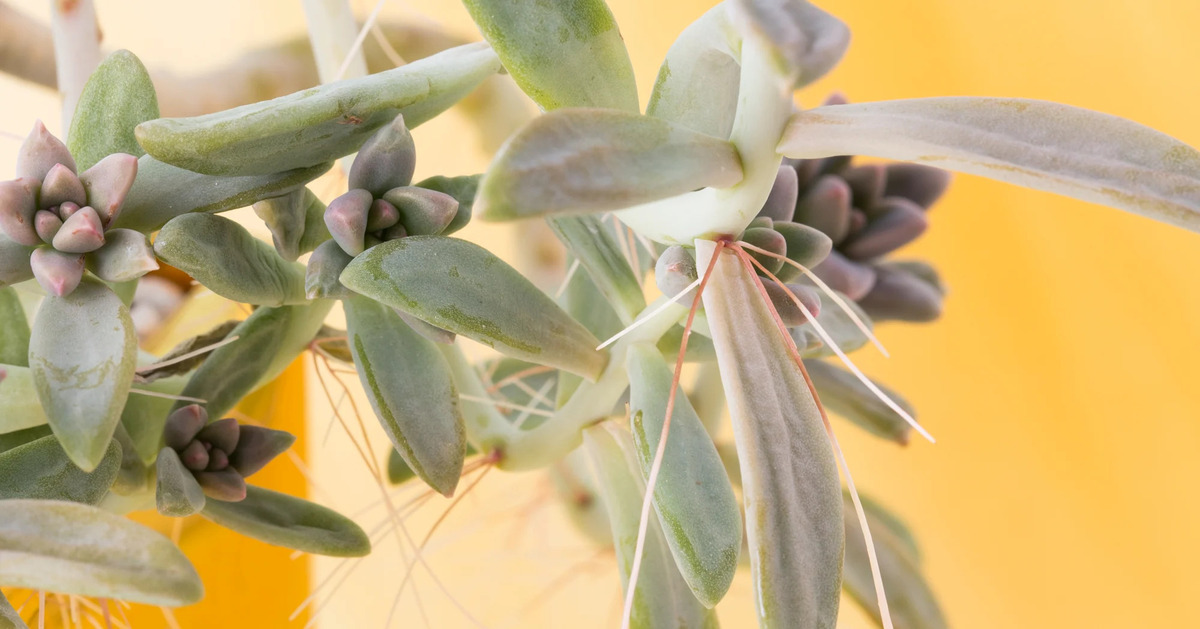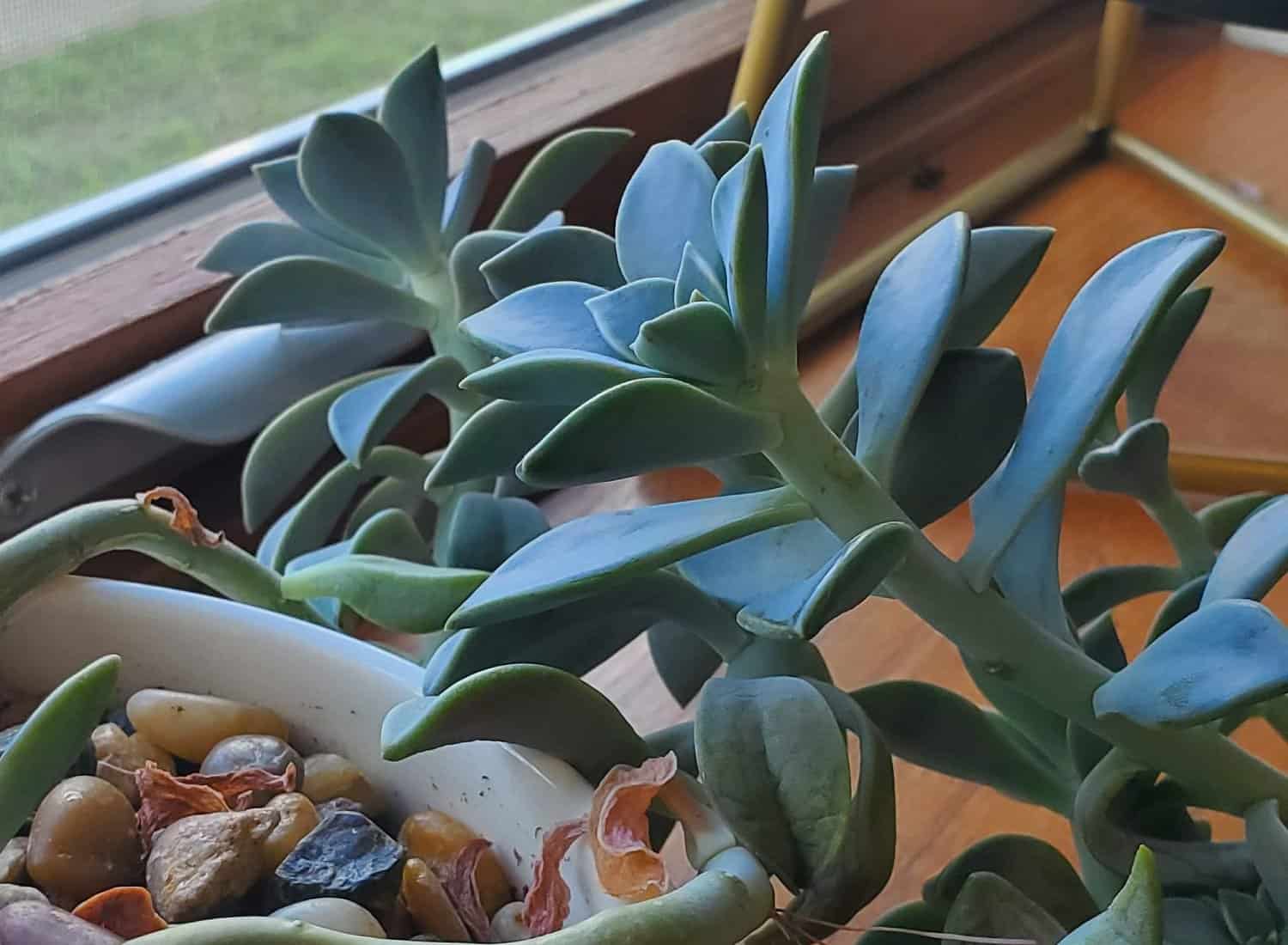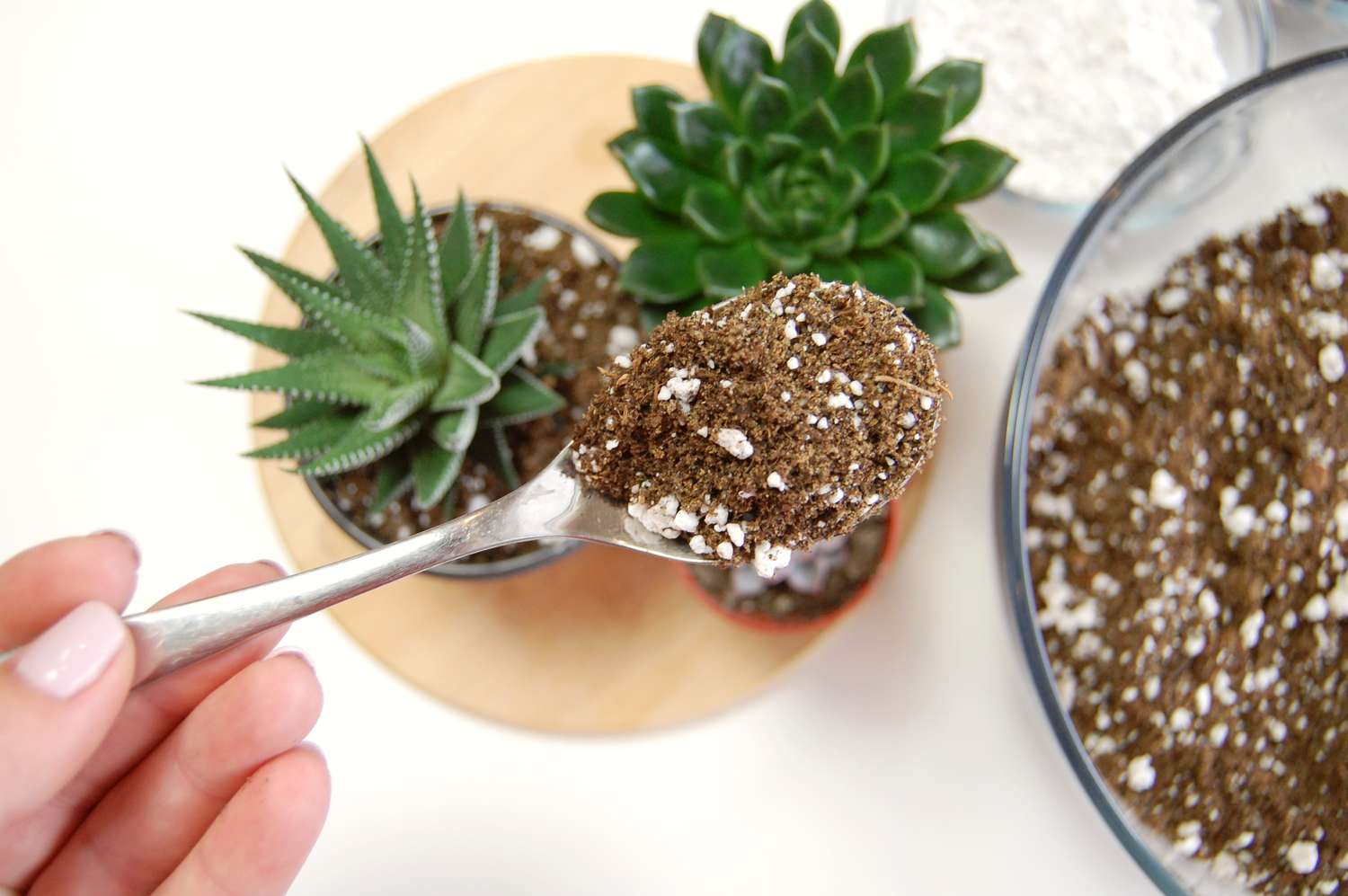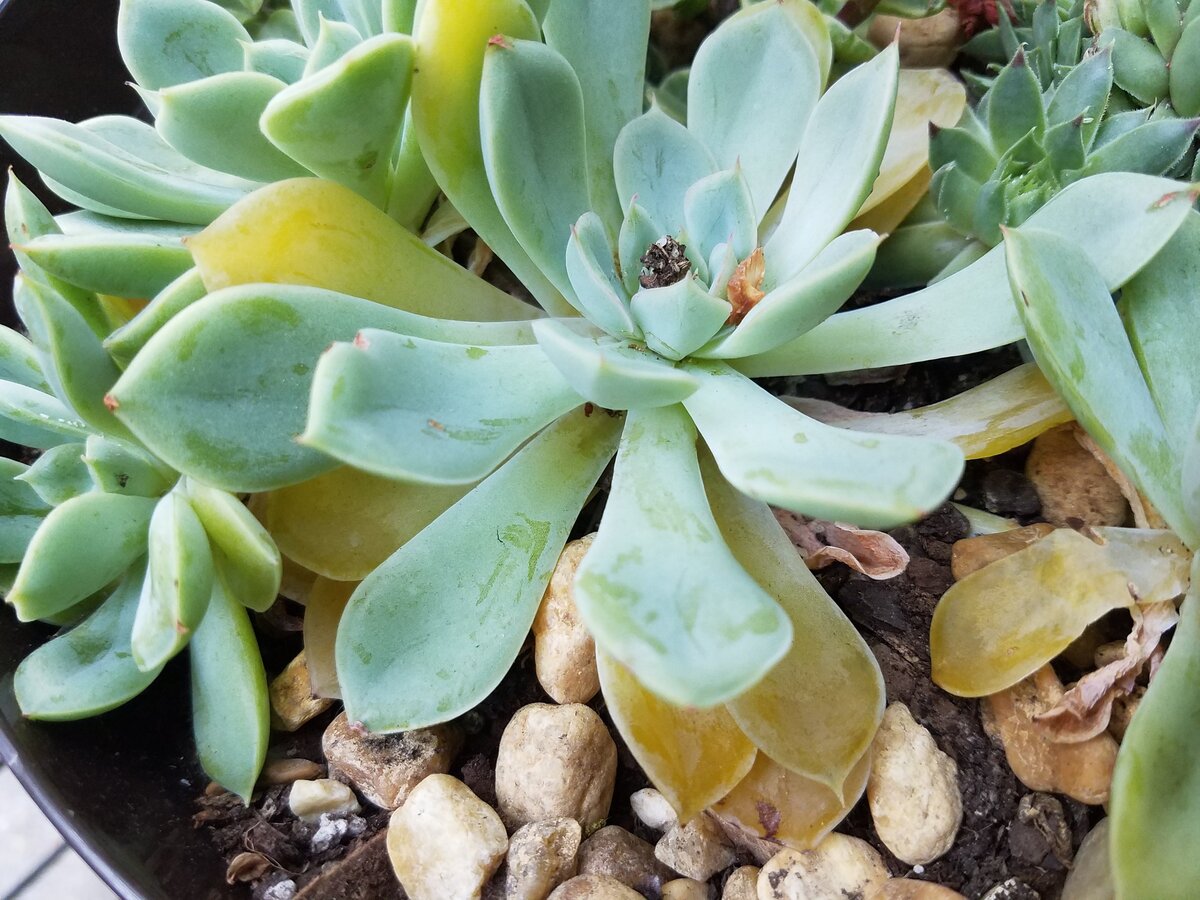Home>Types of Gardening>Ornamental Gardening>What To Do With Propagated Succulents
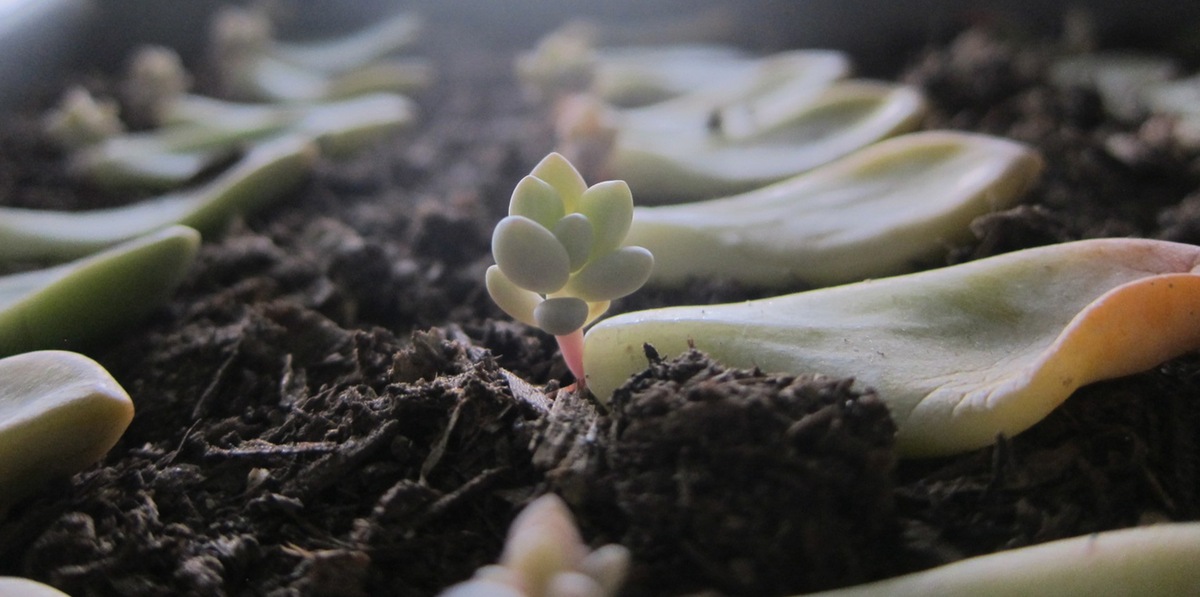

Ornamental Gardening
What To Do With Propagated Succulents
Modified: January 22, 2024
Discover creative ideas for propagating succulents in your ornamental garden. Learn how to expand your succulent collection and enhance your outdoor space.
(Many of the links in this article redirect to a specific reviewed product. Your purchase of these products through affiliate links helps to generate commission for Chicagolandgardening.com, at no extra cost. Learn more)
Table of Contents
Introduction
Introduction
Succulents have gained immense popularity in the realm of ornamental gardening, captivating enthusiasts with their striking appearance and minimal maintenance requirements. These resilient plants, characterized by their fleshy leaves and stems that store water, have become a favorite choice for both indoor and outdoor settings. One of the most rewarding aspects of succulent cultivation is the opportunity to propagate new plants from existing ones, allowing enthusiasts to expand their collection and share the beauty of these unique specimens with others.
The process of propagating succulents offers a fascinating journey into the realm of plant reproduction, providing a hands-on experience that deepens one's understanding of horticulture. Whether it's through leaf cuttings, stem cuttings, or offsets, the propagation of succulents unveils the remarkable ability of these plants to regenerate and thrive under the right conditions. By delving into the art of succulent propagation, gardeners can witness the growth and development of new plants, each with its own distinct characteristics and charm.
This comprehensive guide will walk you through the various aspects of propagating succulents, encompassing everything from selecting the right containers and soil to understanding watering requirements, sunlight needs, and methods of propagation. Additionally, we will explore essential insights into transplanting, repotting, and addressing common pests and diseases that may affect succulents. Whether you're a novice gardener or a seasoned enthusiast, this guide aims to equip you with the knowledge and confidence to embark on a rewarding journey of succulent propagation. So, let's dive in and unravel the captivating world of propagating succulents.
Choosing the Right Container
When embarking on the propagation of succulents, selecting the appropriate containers is a crucial first step. The ideal container should prioritize functionality while complementing the aesthetic appeal of the succulents. Here are essential considerations to keep in mind:
- Drainage: Opt for containers with drainage holes to prevent water from accumulating at the roots, which can lead to rot and other issues. Proper drainage is vital for the health and vitality of succulents, as it mimics their natural habitat where water swiftly drains away.
- Material: While there is a myriad of container materials available, terracotta and ceramic pots are popular choices for succulents. These materials allow for breathability and moisture regulation, contributing to a well-balanced environment for the plants. Additionally, they offer stability and can withstand the weight of the succulents as they grow.
- Size: Consider the size of the succulent and its root system when choosing a container. A container that provides ample space for the roots to expand encourages healthy growth. However, avoid oversized containers, as they can retain excess moisture and lead to root rot.
- Aesthetics: While functionality is paramount, the visual appeal of the container should not be overlooked. Select containers that complement the overall design and ambiance of the space where the succulents will be displayed. This could range from vibrant, eye-catching pots to minimalist, sleek designs, depending on personal preference and the intended setting.
By carefully considering these factors, you can ensure that the chosen containers offer an optimal environment for the propagation and growth of succulents. The right containers not only support the well-being of the plants but also add a touch of elegance to any indoor or outdoor space, enhancing the overall allure of the succulent display.
Soil and Watering Requirements
Choosing the correct soil and understanding the watering needs of succulents are pivotal factors in ensuring their health and vitality during the propagation process. The following insights will guide you in providing the optimal soil and watering conditions for your succulents:
- Well-Draining Soil: Succulents thrive in well-draining soil that prevents water from pooling around their roots. A blend of potting soil, coarse sand, and perlite creates an ideal medium for succulents, promoting adequate drainage while offering essential nutrients.
- Watering Frequency: Unlike many other plants, succulents have adapted to thrive in arid environments and, therefore, have low water requirements. It is crucial to allow the soil to dry out completely between watering sessions to prevent waterlogged conditions that can lead to root rot. A general rule of thumb is to water succulents deeply but infrequently, adjusting the frequency based on the specific needs of the plant species and environmental factors.
- Watering Technique: When watering succulents, aim to moisten the entire root ball thoroughly. However, avoid drenching the foliage, as this can increase the risk of fungal diseases. Additionally, it is advisable to water the soil directly, bypassing the leaves and stems to minimize the likelihood of rot and other moisture-related issues.
- Seasonal Considerations: Recognize the impact of seasonal variations on the watering needs of succulents. During the active growing season, typically spring and summer, succulents may require more frequent watering to support their growth. In contrast, reduced watering is often necessary during the dormant phase in fall and winter, reflecting the plants’ natural cycle.
By prioritizing well-draining soil and adopting a mindful approach to watering, you can create an environment that fosters the resilience and vibrancy of propagated succulents. Understanding the nuanced relationship between soil composition, watering practices, and the unique traits of succulents is fundamental to their successful propagation and long-term flourishing.
Sunlight and Temperature Needs
Providing the appropriate sunlight and temperature conditions is essential for the successful propagation and growth of succulents. Understanding the specific requirements of these factors will contribute to the overall well-being and resilience of the propagated plants:
- Sunlight Exposure: Succulents are renowned for their affinity towards sunlight, often thriving in bright, indirect light or partial to full sunlight, depending on the species. When propagating succulents, it is crucial to position them in locations that receive ample natural light. Indoor settings benefit from south or west-facing windows that allow for sufficient sunlight exposure, while outdoor environments should offer a balance of direct and filtered sunlight to prevent sunburn and promote healthy growth.
- Temperature Considerations: Succulents exhibit remarkable adaptability to diverse temperature ranges, with many species demonstrating resilience in both warm and cool climates. During the propagation phase, maintaining temperatures between 60°F to 80°F (15°C to 27°C) is generally favorable for most succulents. However, it is imperative to research the specific temperature preferences of the succulent species being propagated, as certain varieties may have distinct temperature requirements.
- Seasonal Adjustments: Acknowledge the impact of seasonal changes on sunlight and temperature exposure. As the intensity and duration of sunlight fluctuate throughout the year, along with temperature variations, it is essential to monitor and adjust the succulents’ placement and environmental conditions accordingly. During periods of extreme heat or cold, protective measures such as providing shade or relocating indoor succulents away from drafty areas can safeguard the plants from stress and potential damage.
By conscientiously addressing the sunlight and temperature needs of propagated succulents, you can create an environment that mirrors their natural habitat, fostering robust growth and vitality. Striking a harmonious balance between sunlight exposure and temperature regulation is instrumental in nurturing flourishing succulents that captivate with their resilience and beauty.
Transplanting and Repotting
Transplanting and repotting succulents are integral aspects of their care, particularly during the propagation process and as they continue to mature. These practices ensure that the succulents have adequate space for root development and enable the replenishment of nutrients in the soil. Here are essential insights into the art of transplanting and repotting succulents:
- Transplanting Timing: When propagating succulents from cuttings or offsets, it is crucial to transplant them into individual containers once they have developed a healthy root system. This typically occurs when the new plants exhibit robust root growth, signaling their readiness to be transplanted into their own space. Transplanting at the right stage encourages continued growth and minimizes the risk of overcrowding, which can impede the development of the succulents.
- Repotting Frequency: As succulents mature, they may outgrow their current containers or deplete the nutrients in the soil, necessitating repotting. Repotting is also beneficial if the succulents show signs of distress, such as yellowing leaves, stunted growth, or soil that dries out too quickly. A general guideline is to repot succulents every 2-3 years, allowing for refreshing of the soil and providing the plants with a more spacious and nourishing environment.
- Proper Repotting Technique: When repotting succulents, ensure that the new container is only slightly larger than the previous one, as excessive space can lead to overwatering and soil saturation. Gently loosen the roots and remove any compacted soil, taking care not to damage the delicate root system. After repotting, allow the succulents to acclimate to their new environment before resuming regular watering and sunlight exposure.
- Soil Renewal: During the repotting process, replenish the soil with a well-balanced mix suitable for succulents, ensuring that it offers proper drainage and aeration. This provides the succulents with fresh nutrients and a conducive medium for continued growth, supporting their overall well-being.
By embracing the practices of transplanting and repotting with attentiveness and care, you can facilitate the sustained health and development of propagated succulents. These nurturing acts contribute to the longevity and vibrancy of the plants, allowing them to thrive and enchant with their enduring allure.
Propagation Methods
Propagating succulents encompasses a diverse array of methods, each offering a unique approach to cultivating new plants from existing ones. Whether you are drawn to the simplicity of leaf propagation or the resilience of stem cuttings, exploring these propagation methods unveils the fascinating intricacies of succulent reproduction. Here, we delve into the various propagation techniques that enable enthusiasts to expand their succulent collection:
- Leaf Cuttings: One of the most popular and accessible propagation methods, leaf cuttings involve carefully removing healthy leaves from mature succulents and allowing them to callus before placing them on well-draining soil. Over time, new roots and rosettes emerge from the base of the leaf, giving rise to new plants that mirror the characteristics of the parent succulent.
- Stem Cuttings: Stem cuttings entail snipping a segment of the succulent’s stem and allowing it to dry before planting it in a suitable growing medium. This method is particularly effective for succulents with branching or elongated stems, as it encourages the development of roots and new growth from the severed segment.
- Offsets: Many succulent species produce offsets, also known as pups or baby plants, alongside the mature plant. These offsets can be gently separated from the parent succulent and transplanted into their own containers, where they will continue to thrive and mature independently.
- Division: Division involves carefully dividing the root system of a mature succulent into smaller sections, each with its own roots and stems. This method is suitable for succulents with multiple rosettes or clusters, allowing for the creation of new individual plants from the existing root structure.
- Seed Propagation: While less commonly utilized due to its longer timeframe and the potential for genetic variation, seed propagation offers a captivating journey into the germination and growth of succulents from seeds. This method allows for the exploration of diverse traits and characteristics, contributing to the rich tapestry of succulent cultivation.
By embracing these propagation methods, gardeners can embark on a rewarding and enriching experience, witnessing the marvel of new life emerging from established succulents. Each method offers a captivating glimpse into the resilience and adaptability of succulents, underscoring their innate ability to regenerate and thrive under nurturing care.
Common Pests and Diseases
While succulents are renowned for their resilience, they are not immune to pests and diseases that can affect their vitality. Recognizing the signs of common issues and implementing preventive measures is vital for safeguarding the health of propagated succulents. Here, we shed light on prevalent pests and diseases that succulent enthusiasts may encounter, along with strategies to address and mitigate these challenges:
- Mealybugs: These small, white insects can cluster on the leaves and stems of succulents, sapping their juices and causing stunted growth. To combat mealybug infestations, gently wipe the affected areas with a cotton swab dipped in rubbing alcohol, and consider introducing natural predators such as ladybugs to control the population.
- Scale Insects: Scale insects appear as raised, waxy bumps on succulents, often leading to yellowing and wilting of the foliage. Prune and dispose of heavily infested plant parts, and use horticultural oil or insecticidal soap to eliminate scale insects while minimizing harm to beneficial insects.
- Root Rot: Excessive moisture and poor drainage can lead to root rot, causing the roots to decay and compromising the overall health of succulents. To prevent root rot, ensure that the soil is well-draining and adjust watering practices to avoid waterlogging. If root rot is detected, trim the affected roots and repot the succulent in fresh, dry soil.
- Powdery Mildew: Powdery mildew presents as a white, powdery coating on the leaves of succulents, often stemming from high humidity and inadequate air circulation. Address powdery mildew by improving ventilation, maintaining optimal humidity levels, and applying fungicidal treatments if necessary.
- Spider Mites: These tiny arachnids can inflict damage by piercing the leaves of succulents and extracting their fluids, leading to discoloration and a weakened appearance. Combat spider mites by regularly misting the succulents to increase humidity and employing natural predators such as predatory mites to control the infestation.
By remaining vigilant and proactive in addressing potential pests and diseases, succulent enthusiasts can nurture thriving plants that exude vitality and beauty. Regular monitoring, prompt intervention, and a balanced approach to pest management contribute to the enduring health and allure of propagated succulents.
Conclusion
The art of propagating succulents intertwines the joys of horticultural exploration with the gratification of witnessing new life take root. From selecting the perfect containers and soil to embracing diverse propagation methods, the journey of succulent propagation is a captivating odyssey that invites enthusiasts to immerse themselves in the enchanting world of plant reproduction.
As we navigate the nuances of succulent propagation, it becomes evident that these resilient plants bestow upon us not only their inherent beauty but also invaluable lessons in patience, adaptability, and nurturing care. The process of tending to propagated succulents fosters a profound connection with nature, fostering an appreciation for the intricate balance of life and growth.
By understanding the sunlight, temperature, and watering needs of succulents, we harmonize with the rhythms of the natural world, creating environments that sustain the flourishing of these remarkable plants. Additionally, the vigilance in identifying and addressing common pests and diseases underscores the commitment to safeguarding the well-being and longevity of propagated succulents.
As we conclude this journey through the realm of succulent propagation, let us carry forward the knowledge and reverence gained, nurturing not only the plants themselves but also the enduring fascination and wonder they inspire. May the allure of succulent propagation continue to kindle our curiosity and deepen our connection to the ever-unfolding tapestry of life.

